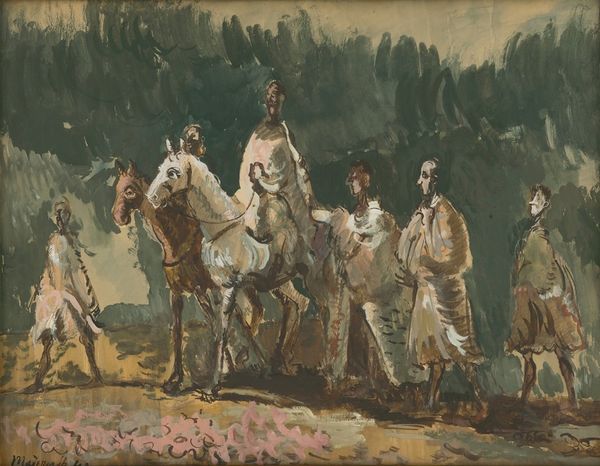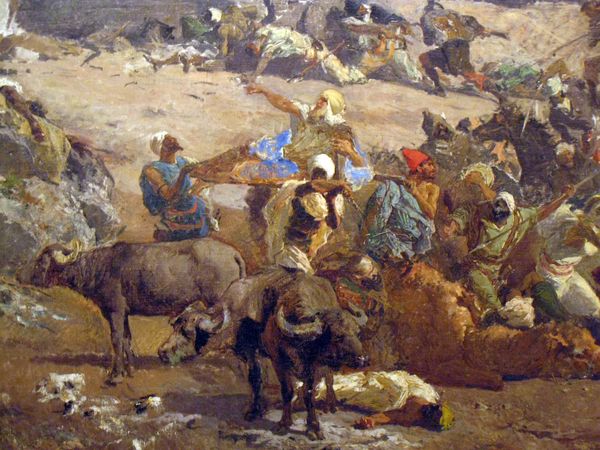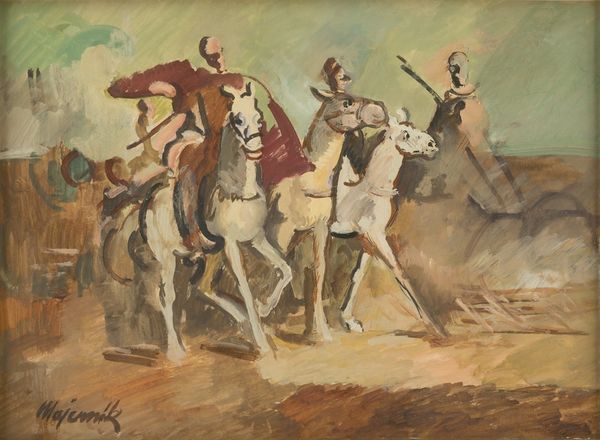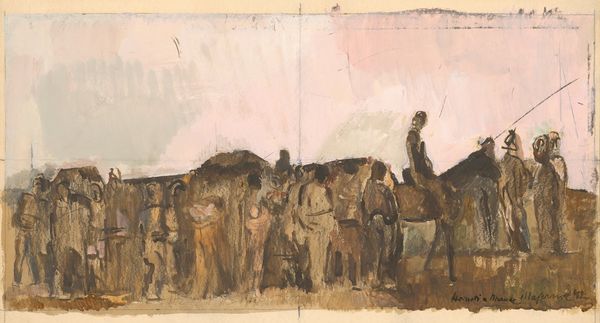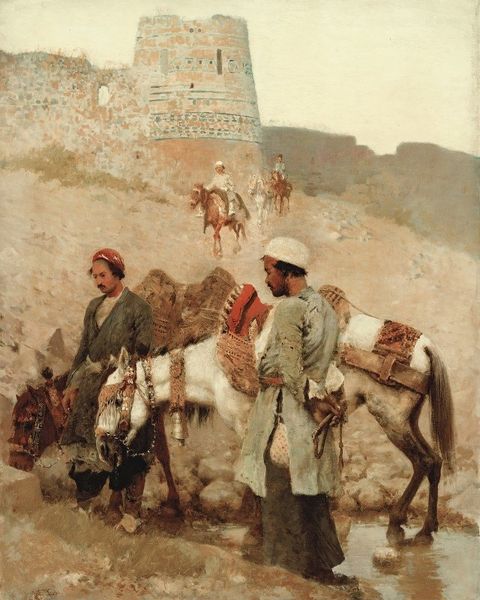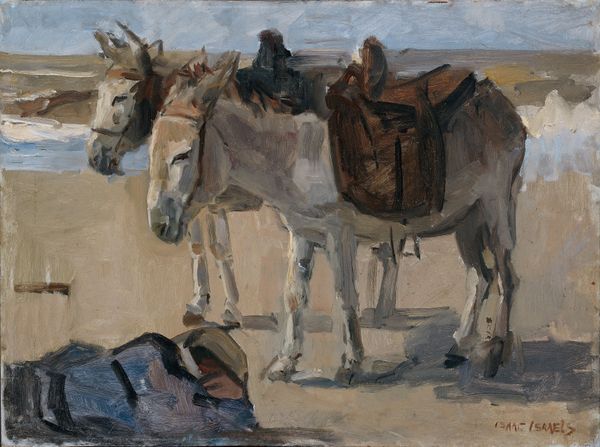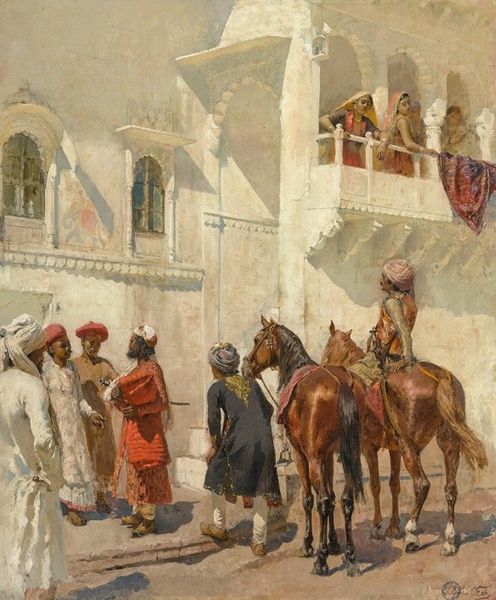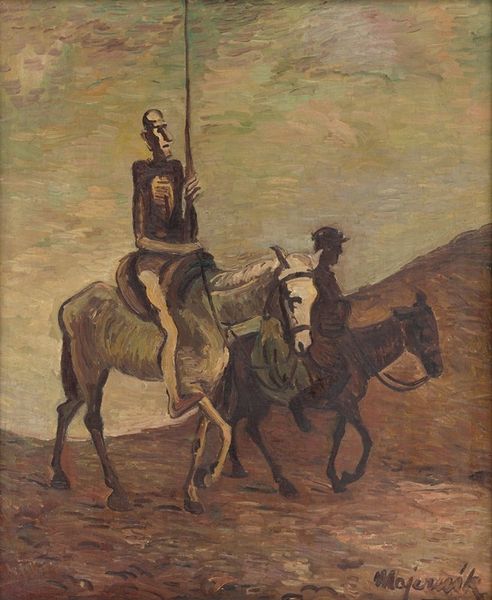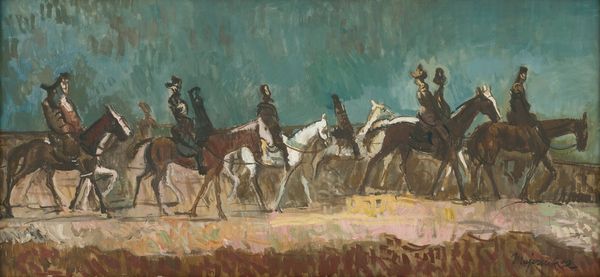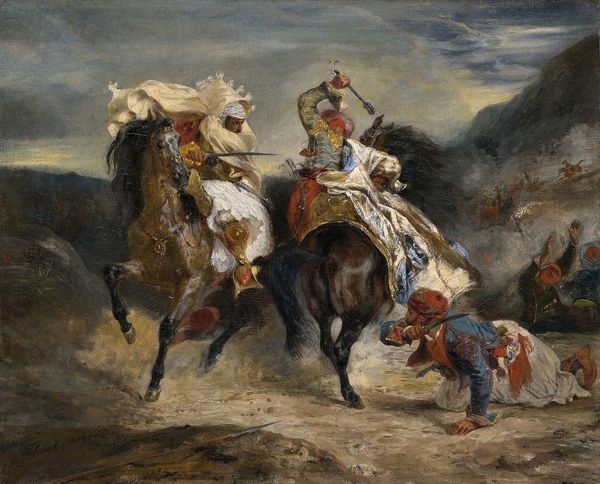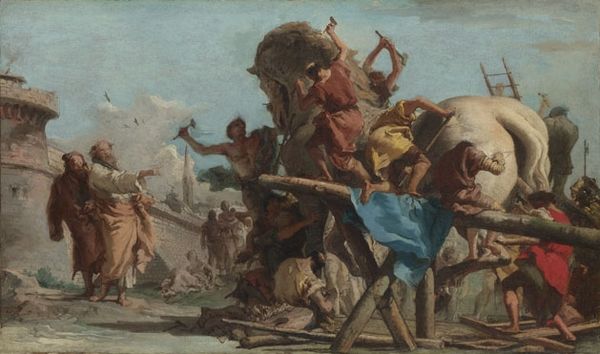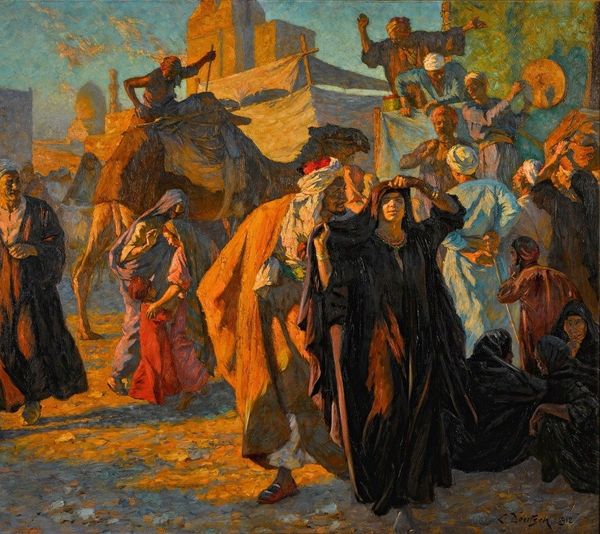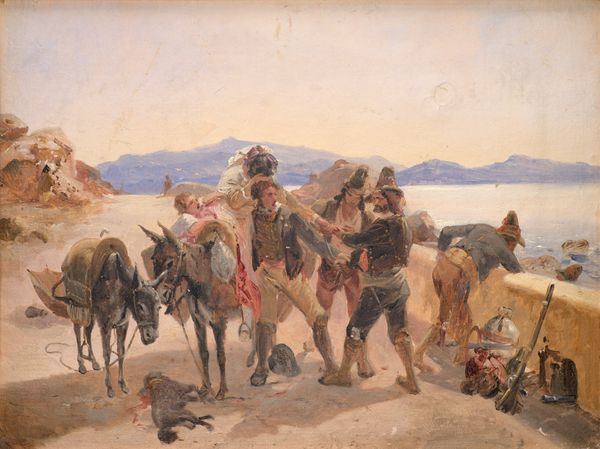
painting, oil-paint
#
portrait
#
painting
#
oil-paint
#
charcoal drawing
#
oil painting
#
group-portraits
#
orientalism
#
genre-painting
#
charcoal
#
watercolor
Copyright: Public domain
Curator: This is Alexandre Jacovleff’s "Afghans," created in 1932 using oil paint. It's part of his exploration of different cultures, a visual record, if you will, from his travels. Editor: My first impression is one of muted earth tones. The composition, with the figures arranged asymmetrically across the canvas, suggests a fleeting moment, a captured observation rather than a staged scene. Curator: It's fascinating to consider this piece through the lens of Orientalism. The portrayal of the Afghan people, their clothing, their postures—it all carries the weight of a Western gaze. We have to ask ourselves, what narratives are being constructed here? Editor: Agreed, there's that inevitable layer. However, focusing on the purely visual, the layering of paint creates a fantastic sense of depth. Notice how the artist uses subtle variations in tone to model the figures, drawing our eyes across the canvas. The rhythm established by these repetitions—the turbans, the seated figures—is quite masterful. Curator: Indeed, it’s worth considering Jacovleff’s training and position as someone who moved between cultures. Did he truly understand his subjects? To what extent does this painting reflect colonial power dynamics, perhaps romanticizing or exoticizing the “other”? Editor: Regardless of the sociopolitical context, consider the painterly quality! The loose brushstrokes in the sky contrast beautifully with the more defined forms of the figures. Semiotically speaking, the figures blend with the landscape—suggesting unity, or perhaps, anonymity. Curator: It's impossible to ignore the legacy of colonialism and its influence on artistic representation, of course, especially in portraying groups or identities so markedly different than the artist’s. Editor: Yes, absolutely. But from a formal point of view, Jacovleff manipulates light and shadow to create a really intriguing visual field. It's these formal structures that gives the painting much of its dynamic tension, even as its social implications cause that same sense of unease. Curator: It’s precisely that tension that makes engaging with this artwork so worthwhile—to critically examine not only what is depicted, but also how and why. Editor: And, through that close attention to both context and composition, the picture really allows a window into Jacovleff’s technical skills.
Comments
No comments
Be the first to comment and join the conversation on the ultimate creative platform.
